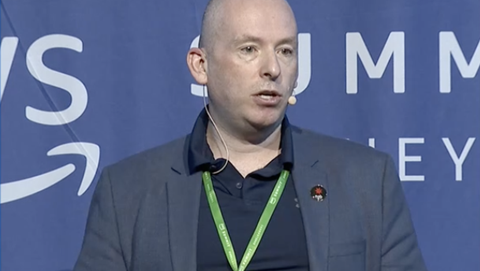Mitsubishi Motors Australia has shifted its core SAP systems used by head office and its 200-plus car dealers to run on cloud infrastructure.

Chief information officer Mark Tiddy told iTnews that the systems - which cover sales, inventory, spare parts, service, warranty, reporting, compliance and dealership CRM - are now hosted in IBM cloud, the platform formerly known as SoftLayer.
“We ran SAP on dedicated infrastructure for a while, and then in 2016 we decided to embark on this plan of migrating into IBM cloud,” Tiddy said ahead of a presentation at IBM’s Think conference in Sydney later today.
Mitsubishi consolidated its Australian core systems on SAP back in 2003 and used IBM services as part of that original transition.
The SAP systems had undergone a “range of changes to suit various business requirements” in the years since, Tiddy said.
The company uses SAP ERP Central Component (ECC) as its foundation, as well as SAP’s CRM, NetWeaver Portal, Business Warehouse (BW), and Governance, risk and compliance (GRC) components.
It is also a Cognos user for business reporting capabilities, and all of those elements have now been re-homed on IBM’s cloud infrastructure.
The move to cloud hosting was, in part, driven by infrastructure capacity management requirements.
Dealers typically place the most demand on IT infrastructure in the last few days of the month as they make orders, close sales and monitor the delivery status of vehicles and spare parts.
The project came with risks from the outset, not least the importance of SAP within Mitsubishi Motors Australia’s operations.
“We position our SAP data as the single source of truth,” Tiddy said.
“It’s fundamental to the operation of our business.”
One of the challenges in approaching the project was that Mitsubishi Motors Australia was in a tiny pool of customers even considering migrating SAP to run in the cloud.
“As I understand it we were the first ever customer to go live with a production capable [SAP] environment in IBM cloud,” Tiddy said.
“We had to understand there may be a few challenges along the way with that.”
One of the main challenges was that the company had to switch cloud migration tools to actually finish the project, after running into “limitations” around its initial choice.
“In collaboration with IBM, we went down the path of using a migration tool called Racemi,” Tiddy said.
“We were under the impression that tool was going to be able to cut it, but going through the development and testing phase of that particular product we encountered a number of issues and limitations.
“The decision was then made to use an alternative product called Double-Take and that went very smoothly.”
While the business continued to operate using its existing SAP system on dedicated infrastructure, the migration tool ran in the background, bringing data across into the cloud-hosted instance.
The actual cutover to SAP in IBM cloud took place in a scheduled 12-hour window.
Tiddy said the company hadn’t had to change anything on the dealer side of the business.
Dealers continue to access SAP through a portal with the same URL as before - the data is simply read from and written to cloud-based infrastructure now instead of dedicated infrastructure.
Global template on the horizon
Mitsubishi Motors Australia held back from upgrading ECC to the newer S/4HANA at the same time because of a push by its Japanese parent to standardise global operations around a single template.
For the same reason, the Australian operations are also holding back for the moment on adopting any SAP cloud platform (SCP) services or extensions for the core.
“Our position on S/4HANA and SAP cloud at this stage is that because we know they're very much on the radar with our global [team], we are not prepared to make the investment at a local level at this stage because we want to see what happens from a global perspective first,” Tiddy said.
“You don’t want to throw money away.”
Given the Australian operation has an established and deeply embedded SAP system already in place, Tiddy said the Japanese parent is looking closely at “what they can reuse from that from a business capability perspective in other parts of the world and what Australia take into the global template/model.”
What impact the existence of a global SAP template would have on Mitsubishi's local SAP capabilities is still an open question.
“At this stage we have to go through a fairly lengthy and rigorous change management assessment to determine what makes it to a global template versus what our local requirements are," Tiddy said.
“The way we sell cars here in Australia and our go-to-market model may be different to other markets, and that is something we need to take into consideration.
“That certainly could have a strong influence on the way we create a mix between our global and local systems.”
The company’s infrastructure and application support resources for SAP are already “heavily biased” to IBM, meaning any centralisation of SAP skills under a global template model would not directly impact Tiddy’s team.
Mitsubishi Motors Australia has a small IT team of “around 13” people, who mostly manage relationships with external suppliers and also perform some business reporting functions.
Ry Crozier is attending IBM’s Think 2018 conference in Sydney as a guest of IBM.



















